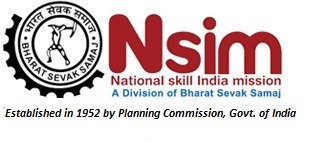Stories you may like
Joseph Hooton Taylor Jr. is an American astrophysicist who shared the Nobel Prize in Physics in 1993 for discovering a new type of pulsar that opened up new possibilities for the study of gravitation. He was born in a family, who were Quakers by descent and his parents managed their own farm in Cinnaminson in New Jersey. He studied at the Moorestown Friends School and then at Haverford College, both were Quaker institutions. At school and in college, he showed a remarkable grasp of mathematics. He earned his doctorate in astronomy from Harvard University and started off as a teacher at the University of Massachusetts. He collaborated with his student Russell A. Hulse to discover the first pulsar in binary system and also proved the presence of gravitational waves a few years later in another paper. After quitting the University of Massachusetts, he became a professor of physics at Princeton University and during his 25 year career at the university; he was made the James S. McDonnell professor of physics and also served as the dean of the physics department for a period.
Childhood & Early Life
• Joseph H. Taylor Jr. was born on 29 March 1941, in Philadelphia, to Joseph Hooton Taylor Senior and Sylvia Evans Taylor. The family, which had Quaker origins, operated a farm of their own. He had five other siblings.
• When Joseph was seven years old, the Taylor family shifted their base to Cinnaminson in New Jersey. He studied at the Moorestown Friends School located in the Moorestown Township in New Jersey. During his time in school, he showed a particular gift for mathematics.
• After graduating from high school, he studied at Haverford College in Haverford, Pennsylvania and was awarded his bachelors’ degree in the year 1963. Subsequently he attended Harvard University, where he studied applied mathematics, physics and astronomy and in 1968, he completed his doctorate in astronomy.
Career
• Following his Ph.D., he worked at Harvard University for some time in the capacity of a researcher. In 1969, he joined the University of Massachusetts and during his 12 year stint there, he became Professor of Astronomy and Associate Director Five College Radio Astronomy Observatory.
• Following the discovery of the first radio pulsars in Cambridge, United Kingdom, he started working on the discovery of pulsars as well. He used the telescopes available at the National Radio Astronomy Observatory to make his first discovery of pulsars. In 1974, Joseph H. Taylor and his student, Russell A. Hulse, discovered the first pulsar in a binary system, named PSR B1913+16
• He continued to conduct research on binary pulsars in collaboration with Russell A. Hulse and in 1978; the duo published a paper in relation to the binary pulsar PSR B1913 + 16 that experimentally proved the presence of gravitational waves. Albert Einstein had theorised on gravitational waves in his famous Theory of Relativity but Taylor and Hulse were successful in proving its existence.
• In 1981, he quit his position at the University of Massachusetts and joined Princeton University in the capacity of a professor of physics. Five years later, he was made the James S. McDonnell Distinguished University Professor in Physics at the same university. He also served as Dean of Faculty for six years and retired in 2006.
• Other than research in physics, he was also involved in amateur radio weak signal communication research and has been a holder of multiple call signs in his career. He was also involved in creating new computer programmes and protocols related to communication technology.
Major Works
• He along with his student Russell Alan Hulse discovered the first pulsar in binary system, namely, PSR B1913 + 16 and his subsequent research proved the existence of gravitational waves. He shared the Nobel Prize in Physics for the same in 1993.
Awards & Achievements
• He was honored with Dannie Heineman Prize for Astrophysics in 1980.
• He won the Henry Draper Medal in 1985.
• In 1990, he won the Magellanic Premium and the following year he was awarded the John J. Carty Award.
• In 1992, he won the Wolf Prize in Physics.
• He shared the 1993 Nobel Prize in Physics in 1993 with Russell A. Hulse for discovering a new type of pulsar that opened up new possibilities for the study of gravitation.
Personal Life & Legacy
• He married Marietta Bisson Taylor in 1976. The couple has three children.
Related Links: PHYSICIST











User's Comments
No comments there.